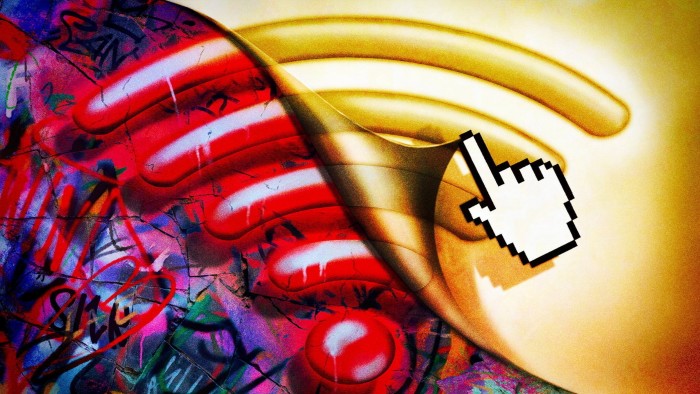What the New York subway tells us about the future of the internet

Stay informed with free updates
Simply sign up to the Technology myFT Digest — delivered directly to your inbox.
The underground railway is an unappreciated wonder of the world. Invented by private entrepreneurs in London in 1863 who were looking to make money transporting suburban commuters to work, it spread rapidly across the globe. One reason to visit New York’s Transit Museum is it not only reminds you of how impressive an endeavour the city’s subway (opened 1904) was but what an achievement all underground railways are. Sadly it also provides a sobering reminder that progress isn’t always inevitable. For those contemplating the future of another great wonder of the modern world — the open, public internet — the subway’s example suggests it might be nearer its peak than we think.
A time traveller from New York in 1946 — the year that its subway reached peak ridership, a figure it has never since equalled — would find the modern version remarkably similar. (I would say “easy to navigate”, but of course the New York subway has never been easy to navigate.) The network is materially unaltered since then: it is just considerably grimier and suffering from decades of under-investment in infrastructure.
In contrast, the peers it once mocked — an advert at its peak crowed about the absence of 24-hour service in Paris — have continued to break records for ridership into the 21st century (albeit with blows to their numbers since the pandemic). As a result of this, their services have continued to grow. The same time traveller in Tokyo, Milan, Paris or London would find many more services and lines than when they began their journey, while the one in New York would still struggle to get from Queens to Brooklyn. Don’t get me wrong, the subway is still a wonder of the world: but it is also, ultimately, a network that hasn’t yet lived up to its full potential.
Why did this happen, and what might it have to do with the internet? Three things that have held back New York’s underground also threaten the promise of our online network. First is innovation elsewhere. Since the subway’s heyday, the cost of owning a car has dropped, and as a result the competition facing underground railways has become stronger. (A similar story lies behind the decline of buses across much of England.)
The innovation that threatens the internet isn’t a competitor: it is the emergence of dangerous new predators that make using it fraught with risk. It is much easier to be fooled by deepfakes or misinformation, or lose out financially due to fraud or identify theft. The bad news for the internet is that these innovations are also harder to spot and to evade. Fraud of all types corrodes social trust and makes using the internet less and less rewarding.
That is intimately linked to the second thing that has held back the subway: crime. The scale of the problem is often exaggerated but, nonetheless, last year 10 people were murdered on the New York subway. Here, some politicians have aggravated the problem: parts of the left have long been naive about the problem of crime, how corrosive it is to public transport and community cohesion more broadly.
In contrast, the internet’s crime problem is not because administrators are unaware of it: just ask anyone involved either in moderation or in law enforcement how much it worries them. But they lack the tools to keep fighting an ever more powerful and sophisticated threat.
This leads to a third problem for both the subway and internet: dysfunctional and uncoordinated leadership. Transport in New York has been cursed by being one network with multiple governors: the city and the state have not worked together well, aggravating the system’s problems.
Similarly, the ability to really combat digital crime involves a degree of international co-operation that seems very far from plausible right now. A frequent complaint I hear from both state and private cyber security professionals is that they have successfully tracked down criminals to their address, but the address is deep in another country. (One law enforcement official complained recently that their options in fighting fraud were often “do nothing, or start a land war in Russia”.) Unless or until there is more global co-operation on fighting fraud, this problem is going to get worse.
That’s not to say that we will stop using the internet. After all, we still use the New York subway, despite the fact it is not as big as it should be, nor as clean, nor as safe. But those 1946 dreams of what the subway would be like in 80 years’ time have not been borne out. It seems more than likely that the internet in 2105 will have the same problem.








